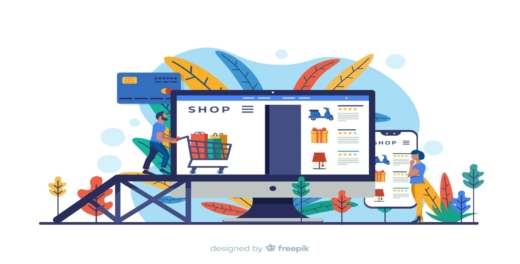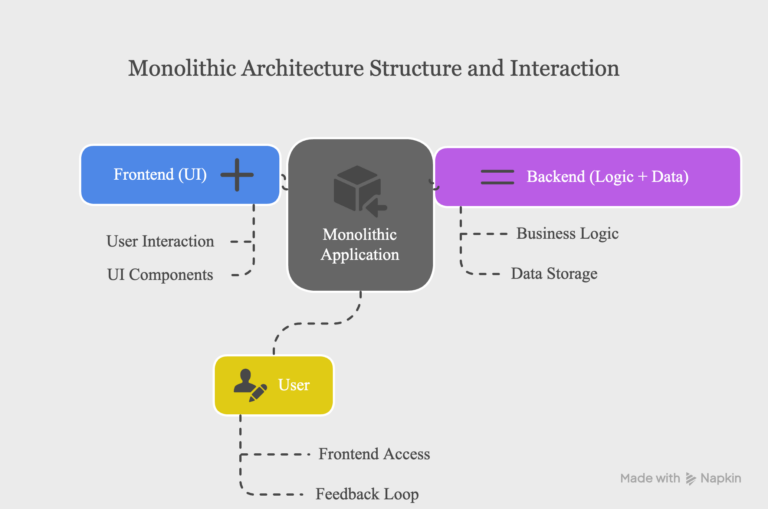Greetings! I'm Aneesh Sreedharan, CEO of 2Hats Logic Solutions. At 2Hats Logic Solutions, we are dedicated to providing technical expertise and resolving your concerns in the world of technology. Our blog page serves as a resource where we share insights and experiences, offering valuable perspectives on your queries.

Quick Summary
Traditional ecommerce platforms offer all-in-one solutions where the frontend and backend are tightly coupled, providing simplicity but limiting flexibility and scalability.
Headless commerce separates the customer-facing frontend from the backend commerce engine, connected via APIs. This offers greater flexibility, performance, and omnichannel capabilities at the cost of higher initial complexity and development investment.
The right choice depends on your specific business needs, technical capabilities, and long-term digital strategy.
Ever found yourself puzzled when developers throw around terms like “headless commerce” during meetings?
Or you’re running an ecommerce store and wondering if there’s a better way to deliver exceptional customer experiences across multiple touchpoints? As an agency that has helped dozens of brands transition to headless architecture, we’ve seen the confusion firsthand.
Let’s break down what headless commerce actually means, how it differs from traditional ecommerce, and why it might be the game-changer your business needs.
What is Traditional E-commerce?
Traditional ecommerce is what most of us are familiar with. A monolithic approach where the frontend (what customers see) and backend (the engine powering everything) are tightly coupled within a single platform.
Think Shopify, BigCommerce, or Magento in their standard implementations. These platforms provide everything you need in one package:
- Product catalog management
- Shopping cart functionality
- Payment processing
- Frontend themes and templates
- Customer account management
The Traditional Architecture

In a traditional ecommerce setup, the architecture looks something like this:
When a customer visits your online store, the frontend sends requests to the backend, which processes them and returns the appropriate responses. All of this happens within a single system.
Are you struggling with the limitations of your current e-commerce platform?
What is Headless Commerce?
Headless commerce, on the other hand, decouples the frontend (the “head”) from the backend (the “body”). The backend still handles all the essential ecommerce functions, but it doesn’t dictate how the frontend should look or behave.
Instead, the backend exposes APIs (Application Programming Interfaces) that allow any frontend, be it a website, mobile app, smart device, or social media platform, to connect and retrieve data as needed.
The Headless Architecture
The backend functions purely as a set of services that manage commerce operations, while the frontend can be developed independently using any technology stack.
Key Differences: Headless Commerce vs. Traditional
Let’s compare these two approaches across several critical dimensions:
| Feature | Traditional Ecommerce | Headless Commerce |
| Architecture | Monolithic (tightly coupled) | Decoupled (separate frontend and backend) |
| Development Flexibility | Limited to platform-specific tools | Complete freedom to choose frontend technologies |
| Customization | Often requires workarounds or plugins | Highly customizable at every level |
| Omnichannel Capabilities | Limited to web and possibly mobile | Any digital touchpoint (web, mobile, IoT, kiosk, voice, etc.) |
| Speed to Market | Faster initial setup | Longer initial setup, faster iterations afterward |
1. Development and Customization Flexibility
Traditional ecommerce platforms come with predefined templates and themes. While they offer some customization options, you’re ultimately confined to what the platform allows.
If you want to create a unique customer experience that sets your brand apart, you’ll often hit roadblocks or need to implement complex workarounds.
Headless commerce, however, gives your development team complete freedom. They can use any frontend technology, React, Vue, Angular, or whatever works best for their specific needs. While the backend handles all the ecommerce logic.
2. Speed and Performance
Traditional ecommerce platforms load the entire application on each page visit, which can slow down the user experience, especially on mobile devices.
Headless commerce allows for the implementation of modern frontend frameworks that support:
- Progressive Web App (PWA) capabilities
- Server-side rendering
- Static site generation
- Code splitting
These technologies can significantly improve load times and overall performance.
Pro-tip: When implementing a headless solution, prioritize performance metrics from day one. Set up monitoring for Core Web Vitals and establish performance budgets for each page type. The flexibility of headless doesn’t automatically translate to better performance; it requires intentional optimization.
3. Omnichannel Experience
Perhaps the most significant advantage of headless commerce is its omnichannel capabilities.
Traditional ecommerce typically focuses on the website experience, with mobile as a secondary consideration. Adding new channels like IoT devices, voice assistants, or in-store kiosks often requires significant customization or entirely separate systems.
With headless commerce, your product information, pricing, inventory, and business logic live in one place but can be accessed by any channel through APIs.
4. Time to Market and Iteration Speed
Here’s where things get interesting:
Traditional ecommerce usually offers a faster initial setup. You can launch a basic store quickly using pre-built themes and functionality.
Headless commerce requires more upfront investment in architecture and development. However, once the foundation is in place, making changes and adding new features becomes much faster since frontend and backend teams can work independently.
Who Should Consider Headless Commerce?
Headless commerce is particularly beneficial for:

- Enterprise businesses with complex requirements and multiple customer touchpoints
- Brands prioritizing unique, differentiated experiences over template-based designs
- Companies with international presence requiring localized experiences
- Businesses with existing technology investments they want to integrate with ecommerce
- Organizations with in-house development teams or reliable technical partners
On the flip side, traditional ecommerce might be a better fit for:
- Small businesses with limited technical resources
- Companies needing to launch quickly with minimal investment
- Organizations comfortable with standard shopping experiences
Not sure which approach is right for your business?
The Middle Ground: Hybrid Approaches
It’s worth noting that the choice isn’t always binary. Many platforms now offer API-first or hybrid approaches that provide some benefits of headless commerce while maintaining the simplicity of traditional systems.
For example:
- Shopify Plus offers a Storefront API
- BigCommerce has headless capabilities
- Magento/Adobe Commerce can be implemented in a headless fashion
These options can serve as stepping stones or provide a balanced approach for organizations not ready for a fully headless solution.
Common Challenges When Going Headless
While headless commerce offers numerous benefits, it’s not without challenges:
- Higher initial development costs: Building a custom frontend requires more resources upfront.
- Increased technical complexity: Managing separate systems requires more sophisticated DevOps practices.
- Content management: Without careful planning, content management can become more complicated.
- Team expertise: Your team needs experience with API-driven development and modern frontend frameworks.
At 2HatsLogic, we help clients overcome these challenges by:
- Developing clear technical roadmaps before implementation
- Creating custom content management workflows
- Providing training and support for internal teams
- Implementing robust testing and deployment pipelines
Pro-Tip: Don’t go headless just because it’s trendy. Start by identifying specific business problems you’re trying to solve, then determine if headless is the right solution. Sometimes a hybrid approach or even optimizing your existing platform can deliver better ROI.
Making the Decision: Key Considerations
If you’re evaluating whether to stick with traditional ecommerce or make the switch to headless, ask yourself these questions:
- How important is a unique, differentiated customer experience to your brand?
- Do you need to deliver consistent experiences across multiple channels?
- How frequently do you need to update your frontend experience?
- What technical resources do you have available (internal or partners)?
- What’s your tolerance for upfront investment versus long-term flexibility?
- How complex are your integration requirements with other systems?
The answers to these questions will help guide your decision.
Explore Headless Commerce for Your Business
At 2HatsLogic, we’ve helped dozens of businesses successfully navigate the transition to headless commerce, delivering exceptional results through our proven methodology:
- Technical assessment and strategy development
- Architecture design tailored to your specific business needs
- Frontend development using cutting-edge technologies
- Seamless integration with your existing systems
- Comprehensive training and ongoing support
Whether you’re just beginning to explore headless commerce or ready to make the transition, our team of experts can help you make informed decisions and implement solutions that drive real business results.
Schedule a free consultation and discover how headless commerce can transform your digital business.
FAQ
What is the main difference between headless ecommerce and traditional ecommerce?
Headless ecommerce separates the frontend and backend, while traditional ecommerce keeps them tightly connected.
Is headless ecommerce better for customization?
Yes, headless ecommerce gives developers more freedom to design and customize the user experience.
Which is easier to set up, headless or traditional ecommerce?
Traditional ecommerce is easier to set up because everything is built together out of the box.
Should I switch to headless ecommerce from traditional?
If you need more flexibility, better performance, and personalized experiences, switching to headless ecommerce can be a smart move.

Related Articles






